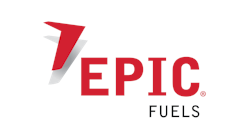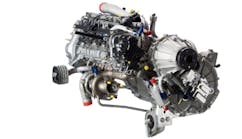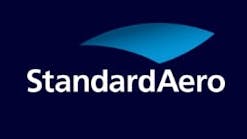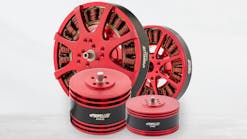Lubrication 101: Piston engine oil, its functions, types, and characteristics
Piston engine oil, its functions, types, and characteristics.By Barb Zuehlke
Oil. Its basic functions within an engine include reducing friction, cooling, sealing, cleaning, and serving as protection for moving parts. But it's often taken for granted. This article will look at the basics of lubrication and the various types and characteristics of oil.
Lubricants provide a fluid barrier between moving parts to prevent friction and wear. As for cooling, oil provides up to 40 percent of an aircraft's air-cooled engine's cooling. Oil creates a seal between piston rings and cylinder walls. This helps to reduce wear, provide better compression, and keep contaminants out while improving fuel efficiency.
If oil is doing its job, it should be dirty. Oil treated with an effective dispersant suspends dirt, metallic materials, and unburned carbon. By monitoring an oil's condition through oil analysis you can establish operating trends to use it as a preventive maintenance tool. Check with engine manufacturer's recommendations, but the typical oil change interval rule of thumb is 50 hours for a filtered engine, and 25 hours if it is a screened engine. Along with the hourly interval, oil should be changed on a quarterly or seasonal basis. This process will help eliminate moisture from the engine and oil to help prevent corrosion.
Types of oils are derived from specifications developed by the military in the 1940s and later standardized by the Society of Automotive Engineers (SAE). The system classifies engine oils by viscosity grades. Oils are classified based on their measured viscosity at high temperatures for single grade oils and at low and high temperatures for multigrade oils. Multigrades have a high viscosity index (VI) and may fall into more than one SAE grade classification.
Aviation engines have used a different viscosity rating than that of automotive and SAE. They use 65 weight or SAE 30, 80 weight or SAE 40, 100 weight or SAE 50, and 120 weight or SAE 60. Aviation multigrades developed later adopted the SAE automotive system of classification and can be found in 15W-50, 20W-50, and 25W-60 ranges.
SAE standards for lubricating oils include J1966 and J1899. The SAE standard J1966 establishes the requirements for nondispersant, (straight grade) mineral lubricating oils used in four-stroke cycle piston aircraft engines. It covers the same requirements as the former military specification MIL-L-6082. J1899 establishes the requirements for lubricating oils containing ashless dispersant additives, the same as MIL-L-22851.
Following are some technical terms, characteristics, and descriptions of the various types of lubricating oils used in the aviation piston engine industry.
Viscosity
Viscosity is the measure of the oil's resistance to shear or flow. High
viscosity indicates a high resistance to flow while low indicates a low resistance. It varies with temperature and is affected by pressure. Increasing temperature causes viscosity to decrease; conversely reducing temperature causes viscosity to increase. Higher pressure causes viscosity to increase which also increases the oil's film thickness. Viscosity is measured by shear and time. When measured by shear it is expressed in centipoise and is known as dynamic viscosity. Kinematic viscosity is expressed in centistokes and is usually given at two temperatures 40 C and 100 C. Kinematic viscosity is measured as the time required for an oil sample to flow through a viscosity tube at a standard temperature. This value is then converted to centistokes.
Pour point
This is the lowest temperature at which an oil will flow. Oils are usually selected to ensure the pour point is well below anticipated ambient temperatures.
Flash point
The flash point is the lowest temperature at which a lubricant must be
heated before it's vapor, when mixed with air and exposed to a source of ignition will ignite but not continue to burn. It is used to determine the transportation and storage temperature requirements along with potential product contamination.
Single or monograde
Monograde oil is a petroleum-based lubricant with a single viscosity grade. Single-grade oils are considered by some to be better for warmer temperatures, but can't provide the flow needed for cold start-ups without the use of a heated hangar or engine preheating devices. In some locations one viscosity can be used throughout the year.
There is a long-running debate between single and multigrade oils. Some users prefer the single grade as it provides better high temperature and shear stability. Others believe only a multigrade can deliver the performance required.
Straight mineral oil contains no dispersant and is usually recommended by manufacturers for the first 50-hour break-in period on new or newly overhauled engines. It allows faster piston ring seating and allows the accumulation of some advantageous deposits which lead to better oil loss control.
Multigrade oil
Multigrade oils are either full mineral-based oil or a synthetic blend.
Multigrades are primarily designed around all-season operation and convenience. They meet the requirements of more than one SAE viscosity grade classification, and are therefore more suitable for use over a wider temperature range than a single-grade oil. Multigrade oils contain viscosity improvers that reduce the tendency of an oil to lose viscosity or thin out at different viscosities. Other benefits incude lower oil consumption and better fuel economy.
Ashless dispersant
These oils are represented by both multigrades and the AD monogrades and are governed by SAE J1899. Ashless dispersants are additives designed to minimize deposit formation. They do not contain metal compounds, which would contribute to deposits in the combustion chamber. The dispersants help prevent contaminants from forming sludge that could plug oil passageways. They help the oil suspend combustion by-products, keeping them dispersed until the oil is drained.
Synthetic
Synthetic oils are polyalphaolefins produced from chemical synthesis rather
than the refinement of petroleum oils. Through the refining process molecules are manufactured to a uniform size and structure. Characteristics, although dependent on application, include better oxidation stability or resistance, higher viscosity index, a lower pour point, lower coefficient of friction, and longer life. One disadvantage is cost which can be several times higher than mineral-based oils.
Synthetic oils have been linked to issues with seal deterioration, as well as solubility issues with leaded fuel causing deposits to develop, and passageways, like arteries, getting clogged. Some maintenance technicians have even developed the skill of identifying the engine oil used by the level of buildup left behind. Only one fully synthetic aviation piston engine oil ever made it to market. This product was subsequently pulled for some of the reasons mentioned.
Additives
Oil quality is determined by refining processes but additives can improve overall performance. Additives, usually new technology brought to the market through multigrades, can include anticorrosion, high load, and anti-scuffing characteristics. They can dramatically improve the performance of lubricants in older technology engines.
Textron Lycoming developed an anti-wear/anti-scuffing additive LW-16702 outlined in AD 80-04-03 R2. Since its introduction into the market, several oils have received supplemental type certificates that can be used as alternatives.
Maintenance
So whether you choose a single-grade or a multigrade, straight or an ashless
dispersant make sure the oil change intervals are maintained according to manufacturer recommendations. Also consider the aircraft type, engine type, and the flight profile to help determine the correct oil for the environment and application. This will help ensure the oil you're using performs to the standard required.
Additional Resources
AeroShell
Houston, TX
www.shell.com
AirBP Lubricants
Parsippany, NJ
www.bp.com
ConocoPhillips Lubricants
Houston, TX
www.phillips66.com
ExxonMobil
Irving, TX
www.exxonmobil.com
Society of Automotive Engineers
Warrendale, PA
www.sae.org








